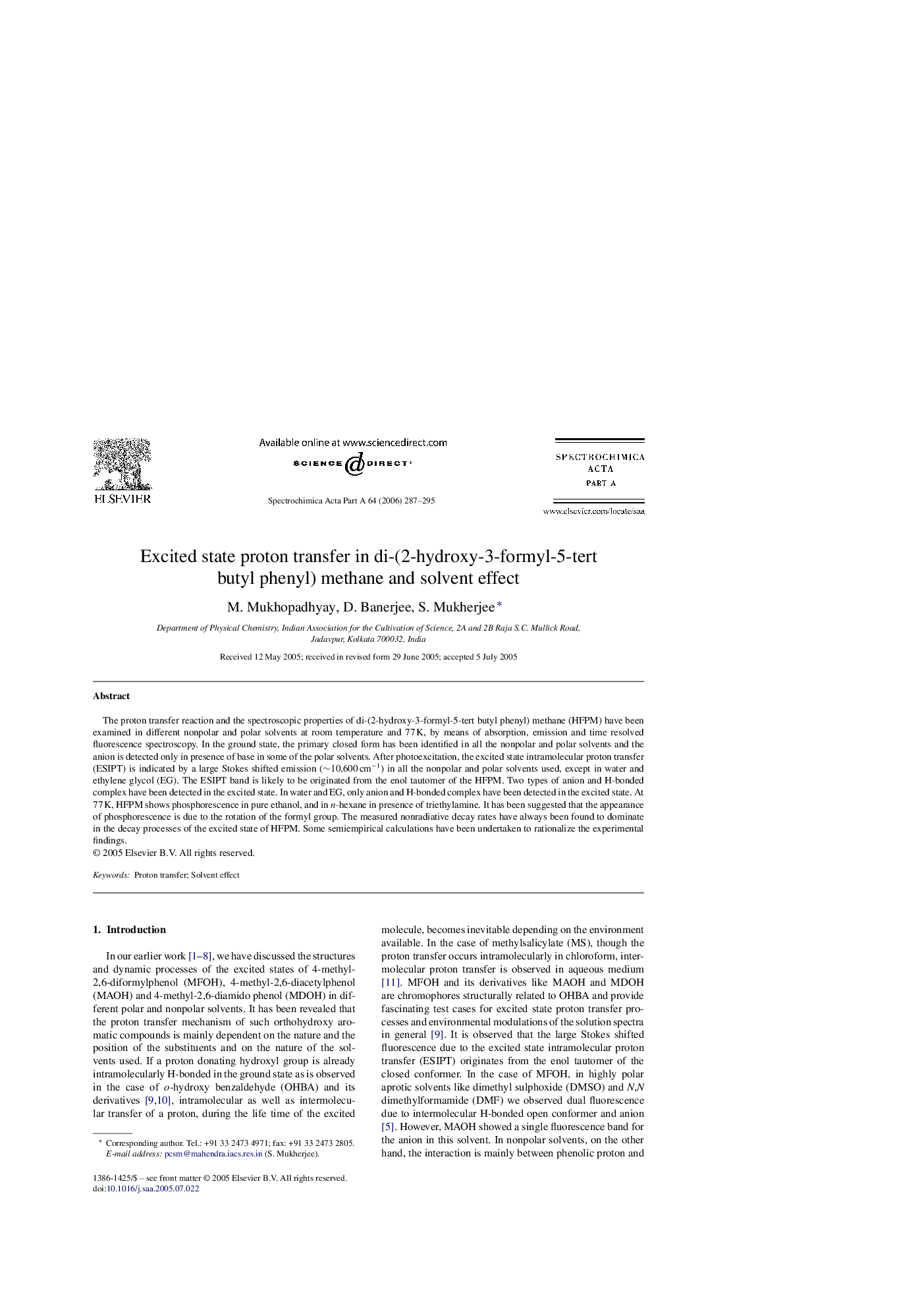| Article ID | Journal | Published Year | Pages | File Type |
|---|---|---|---|---|
| 1236563 | Spectrochimica Acta Part A: Molecular and Biomolecular Spectroscopy | 2006 | 9 Pages |
Abstract
The proton transfer reaction and the spectroscopic properties of di-(2-hydroxy-3-formyl-5-tert butyl phenyl) methane (HFPM) have been examined in different nonpolar and polar solvents at room temperature and 77Â K, by means of absorption, emission and time resolved fluorescence spectroscopy. In the ground state, the primary closed form has been identified in all the nonpolar and polar solvents and the anion is detected only in presence of base in some of the polar solvents. After photoexcitation, the excited state intramolecular proton transfer (ESIPT) is indicated by a large Stokes shifted emission (â¼10,600Â cmâ1) in all the nonpolar and polar solvents used, except in water and ethylene glycol (EG). The ESIPT band is likely to be originated from the enol tautomer of the HFPM. Two types of anion and H-bonded complex have been detected in the excited state. In water and EG, only anion and H-bonded complex have been detected in the excited state. At 77Â K, HFPM shows phosphorescence in pure ethanol, and in n-hexane in presence of triethylamine. It has been suggested that the appearance of phosphorescence is due to the rotation of the formyl group. The measured nonradiative decay rates have always been found to dominate in the decay processes of the excited state of HFPM. Some semiempirical calculations have been undertaken to rationalize the experimental findings.
Keywords
Related Topics
Physical Sciences and Engineering
Chemistry
Analytical Chemistry
Authors
M. Mukhopadhyay, D. Banerjee, S. Mukherjee,
